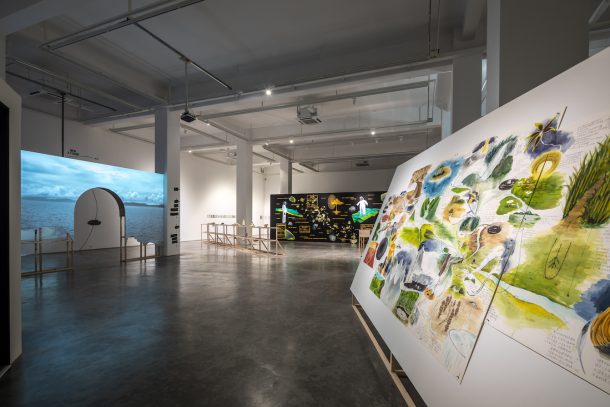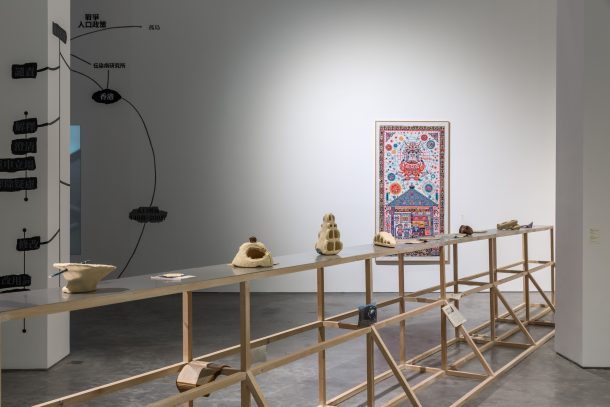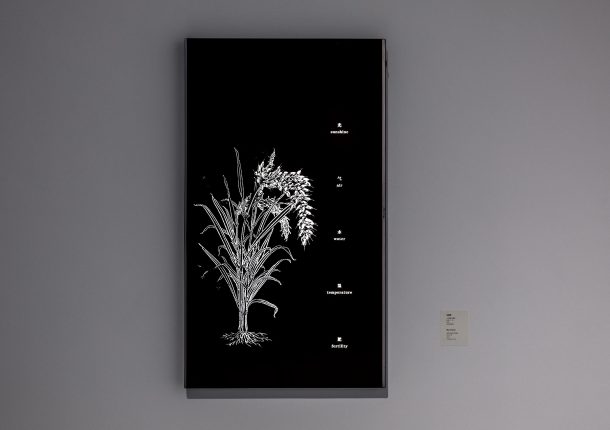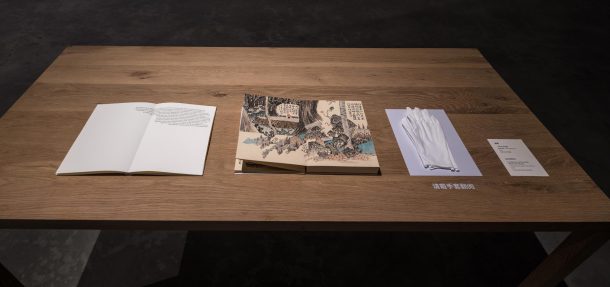Ecologizing Marxism at Long March Space
| 2020年12月22日

From its beginnings in the 1927 Jiangxi Soviet, Marxist politics and thought in China has long been distinguished from European counterparts with a focus on land, the condition of agricultural peasants and the structure of rural land ownership. Today, as societies around the world grapple with the unique civilizational challenge of climate change, curators and artists associated with the Long March Space in Beijing’s 798 Arts District have led a unique research initiative, trying to unearth what links there might be between Chinese Marxism as a historical practice and experience and ecological movements. What is China’s “ecological civilization,” and what are its ideological origins? Given the unquestionably parlous state of much of China’s air, water, and soil—what the reading group understands as a deficiency or a lack—what unique contribution can China and her politics bring to the challenge of climate change? Most of all, can the art world—with its commercialism and gossip, its unique global community of morally compromised adventurers—can we make the change from champagne socialists to carbon-neutral Marxists?

Long March isn’t alone in bringing contemporary art spaces, discourses and practices to bear on climate change, a problem which seems so terrifying that we are bound to respond to it in any way that we can. Across greater China and the world, curators and intellectuals are trying to put the resources of contemporary art to work in considering how our urban civilization relates to the resources of the earth, and how we might reconfigure that relationship towards sustainability in a way consonant with equality. It can be difficult to consider the question posed by climate change without succumbing to melancholic feelings of powerlessness. Indeed, the conceit of “deficit” that the Long March reading group came up with reflects our sense of powerlessness; we find ourselves in a pre-existing situation, one that we didn’t choose and find difficult to change, but impossible to live with. In the communist society so vaguely described by Marx—“where nobody has one exclusive sphere of activity but each can become accomplished in any branch he wishes, society regulates the general production and thus makes it possible for me to do one thing today and another tomorrow, to hunt in the morning, fish in the afternoon, rear cattle in the evening, criticize after dinner, just as I have a mind, without ever becoming hunter, fisherman, herdsman or critic”—in such a civilization, artists would pursue whatever they had in mind. But in the world we live in, and specifically in China, artists’ works are linked with the notion of social progress formally within the structure of Mao Zedong’s Yan’an Symposium on Arts and Literature. Art for art’s sake is not sustainable in this time of crisis; artists, like every other person alive today, must come up with their own solutions to the existential dilemmas of climate change. In this respect, it’s nice that artists and curators around the world are considering this question, but in reality, the Chinese government is leading the move towards green technologies, in the face of recalcitrance from, for example, the US government. Therefore, understanding how the ideas and history of Marxism in China interlock with ecological thought, as Long March has set out to do, is crucial.

Video, 4 min 18 sec
View of “Long March Project: The Deficit Faction,” Long March Space, Beijing, 2019
The sense that we are in a given situation, called geworfenheit by Heidegger, has been weaponized by Ackbar Abbas within the form of “poor theory”—rather than observing our world and our existence within it, as Heidegger would have us do, Abbas and therefore, the Long March team, would have us look around our environment, even if it is the grey chill of a Jiuxianqiao November, with an eye to the tools available to us to changing it—“us[ing] the tools at hand to take the present to task.” In this respect, poor theory and Long March’s approach is precisely Marxist; not to observe the world, but to change it. Artists such as Tao Hui, who explores the pathways of goods in China’s new digital economy in Sichuan to Shenzhen, Mao Chenyu, whose Automatic Paddy recalls previous Marxist explorations of rural Hunanese agricultural communities in its “speculative response to breakdowns in the rice paddy ecosystem.” It’s a future born of a scarcity of light, a scarcity of food, and a scarcity of humans, or Liang Shuo’s “Collection of Wood, Paper and Stones,” which utilizes Chinese landscape painting techniques to integrate the new (and often hideous) built environment into the framework of Chinese painterly aesthetics—returning to the sites that Wang Wei visited during the T’ang, and painting what he sees—these artists and others in the Long March show situate us in the ecology of China’s diverse regions and beyond, from Hunan to Shaanxi to the Greater Bay Area and the Northeast—share what they’ve found there, and give us a strong sense of where we actually are, as we head into 2020, with only a decade to go before 2 degrees Celsius of warming is a fait accompli.

Ink and color on paper, 576 x 25.5 cm
View of “Long March Project: The Deficit Faction,” Long March Space, Beijing, 2019


